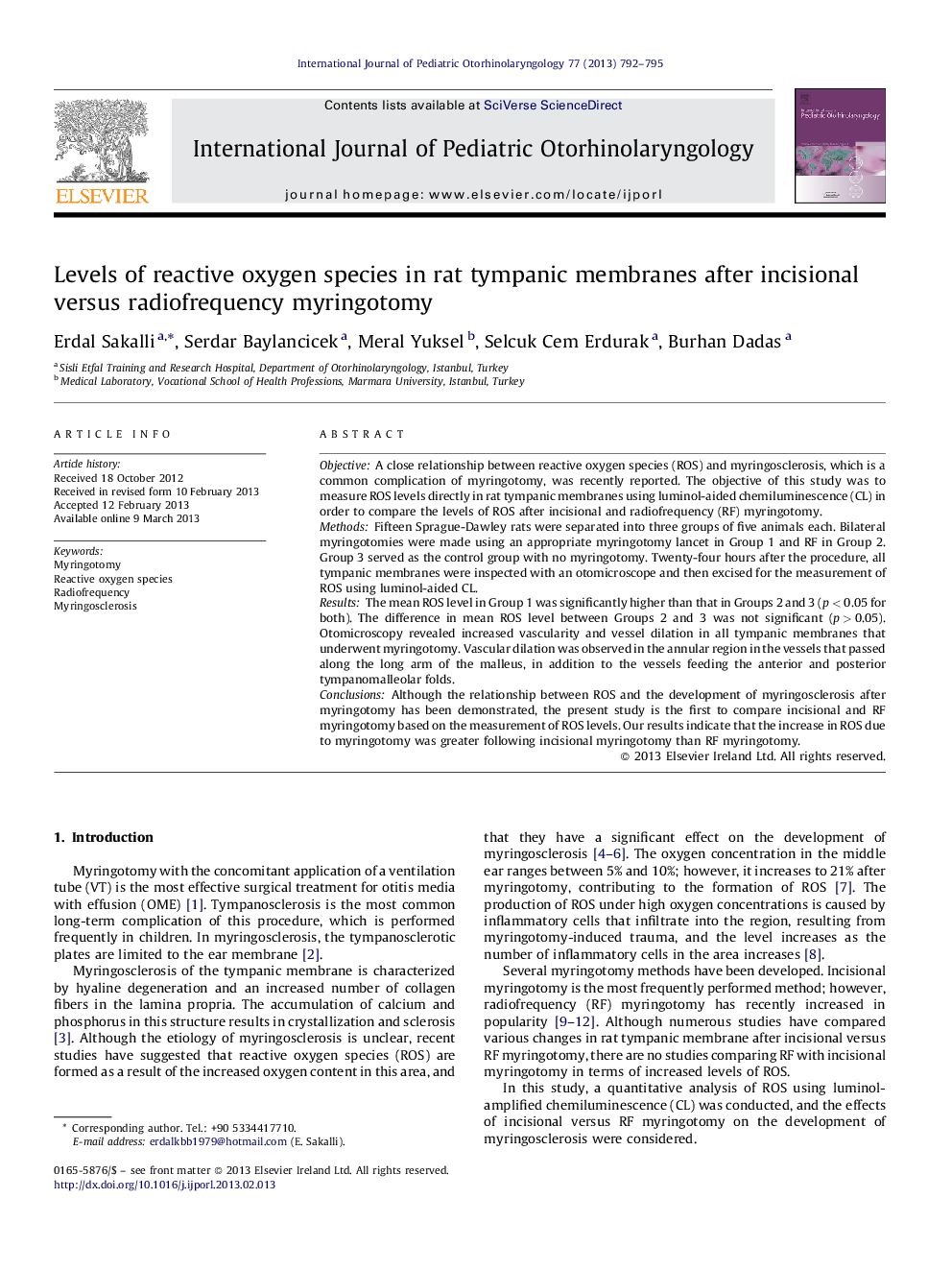| Article ID | Journal | Published Year | Pages | File Type |
|---|---|---|---|---|
| 4112635 | International Journal of Pediatric Otorhinolaryngology | 2013 | 4 Pages |
ObjectiveA close relationship between reactive oxygen species (ROS) and myringosclerosis, which is a common complication of myringotomy, was recently reported. The objective of this study was to measure ROS levels directly in rat tympanic membranes using luminol-aided chemiluminescence (CL) in order to compare the levels of ROS after incisional and radiofrequency (RF) myringotomy.MethodsFifteen Sprague-Dawley rats were separated into three groups of five animals each. Bilateral myringotomies were made using an appropriate myringotomy lancet in Group 1 and RF in Group 2. Group 3 served as the control group with no myringotomy. Twenty-four hours after the procedure, all tympanic membranes were inspected with an otomicroscope and then excised for the measurement of ROS using luminol-aided CL.ResultsThe mean ROS level in Group 1 was significantly higher than that in Groups 2 and 3 (p < 0.05 for both). The difference in mean ROS level between Groups 2 and 3 was not significant (p > 0.05). Otomicroscopy revealed increased vascularity and vessel dilation in all tympanic membranes that underwent myringotomy. Vascular dilation was observed in the annular region in the vessels that passed along the long arm of the malleus, in addition to the vessels feeding the anterior and posterior tympanomalleolar folds.ConclusionsAlthough the relationship between ROS and the development of myringosclerosis after myringotomy has been demonstrated, the present study is the first to compare incisional and RF myringotomy based on the measurement of ROS levels. Our results indicate that the increase in ROS due to myringotomy was greater following incisional myringotomy than RF myringotomy.
